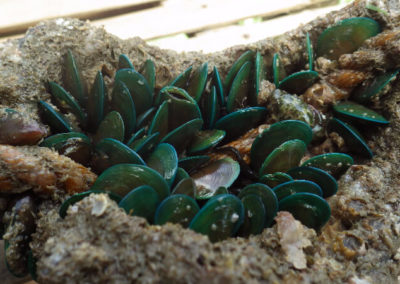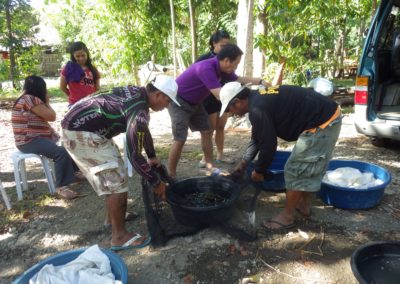![]() Grow-out
Grow-out
Transplantation and spatfall determination of green mussel, Perna viridis
The green mussel (Perna viridis) is a traditional aquaculture species in the Philippines. Its contribution to the country’s aquaculture production from 2013 to present plays around 25,660 tons. However, the increase and sustainable production of this species is hindered by the availability of seed (spat) supply.
Producing spats under controlled conditions in hatchery will give growers greater security by reducing risks inherent to sourcing mussel spats from the wild. A hatchery provides better opportunities to increase production levels by having spats available for a longer period of time.
The Philippine green mussel hatchery developed by the UP Visayas researchers is patterned (with slight modification) to the shellfish hatchery in Australia, New Zealand, and Japan. Research activities include broodstock conditioning and spawning in the laboratory, larval spat rearing and settlement, and development of protocols for mass production of mussel larvae and spats.
Project Leaders

Dr. Carlos C. Baylon
Institute of Aquaculture
College of Fisheries and Ocean Sciences
UP Visayas
ccbaylon20@yahoo.com
Benefits
Introduces or supplements reproduction of natural populations in order to develop new self-sustaining populations.
Food security
New commodities for livelihood
Target Beneficiaries
Mussel farmers
Fisherfolks
Location
Iloilo




